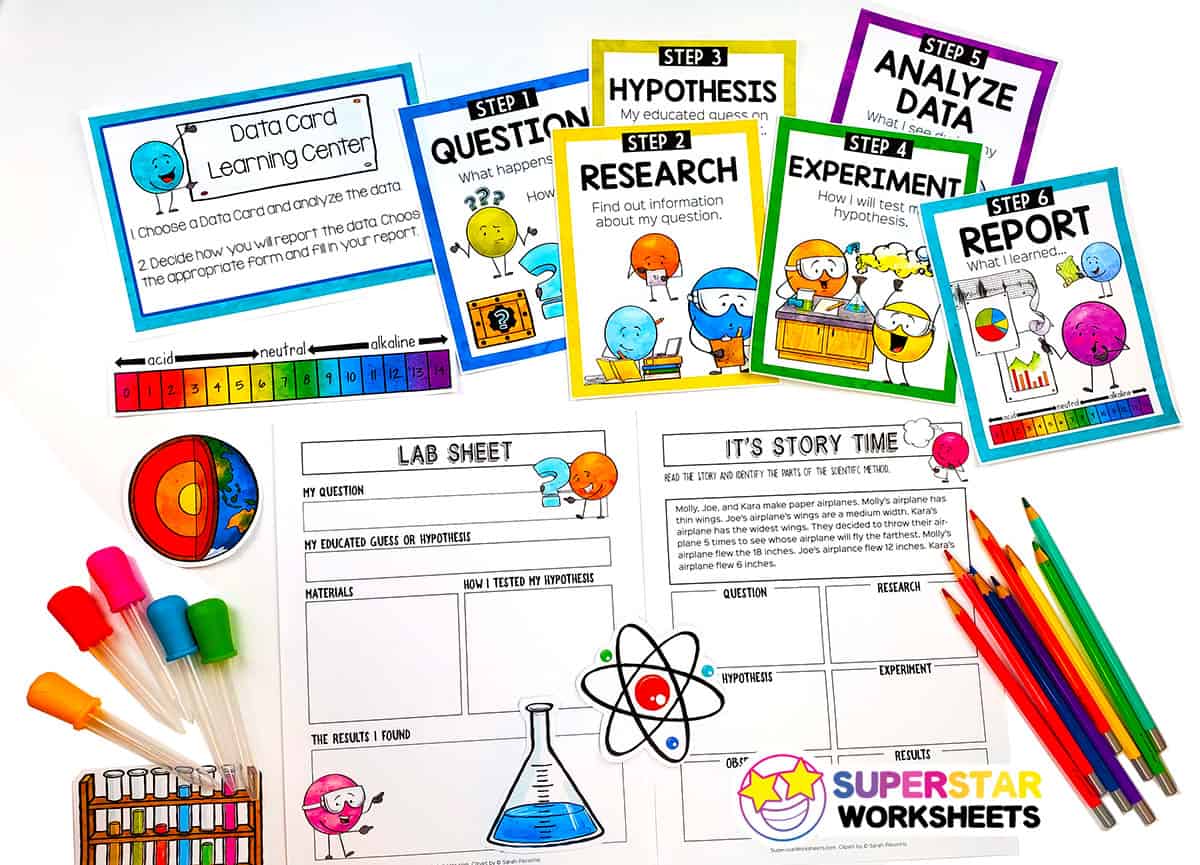Scientific Method for Kids

What kid doesn’t like blowing up things and getting messy? While Moms are not real keen on the idea of messes, they also know it’s just a part of the learning process. However, it’s not just about the experiments, it’s also about the process. Here is how the scientific method for kids work and some great science laboratory ideas to get your started that are easy, affordable, and of course, enjoyable for your kids!

What is the first step of the scientific method for kids?
Ask a question
Kids are full of questions. You are probably answering them all day. So coming up with a question won’t be hard. However, the question needs to be focused and direct. This is where children will need help. Give them guidance to narrow down their ideas to one specific question that can be tested. Be sure to write down your question, this is the first step in the scientific method for kids. Practicing creating good questions is a skill that will also help in communication. Just one way in which the arts and sciences come together.

Do Research Before Your Science Experiment
Now that you have a question, it’s time to set the stage for a successful experiment. This requires research. Sometimes when going through the scientific method for kids, this site gets skipped or rushed. Many believe that kids either don’t need to or are not capable of research. However, why not start young. Research is an important skill for lifelong learning that can be used across all disciplines. Even if you are doing a simple experiment, model how to research and complete this step.
Read up on background information. Keep reading until your child feels confident sharing the information with someone knew. This is very important step in the scientific method.
Teaching Kids about a Hypothesis
So, you have written down your quest and researched your topic. It’s time to form a hypothesis. A hypothesis is an educated guess. It means you have a good idea of how things work and how your question will be answered. However a hypothesis can be proven wrong. Be sure that the kids know that a hypothesis is a guess. The point of the scientific method is not to necessarily prove that you are right. It’s a learning process, and even if your hypothesis is wrong, you are learning. In fact you will probably learn more from a failed hypothesis in the long run.
Experiments for Kids that Teach the Scientific Method
This is the fun part! Kids love experiments, especially ones with lots of noise or color. Plan your experiment. What are you testing and how will you test it? What materials do you need? How will you record data? Even if you are using a premise experiment plan, you should still take time to plan it before starting. Make sure everything is laid out and ready so you can just focus on the experiment, not finding or preparing supplies.
You can construct your own experiment to test the hypothesis or use one of the many lesson plans available on the internet. Here are some of our favorite experiments for kids:

Scientific Method Experiments
Looking for some easy science experiments where you can find staple items in the house? Try these simple yet super fun science activities that are easy to do, yet, educational for the kids.
Six Easy and Fun Experiments for Kids
Easy Science Experiments for Kids
37 Cool Science Experiments for Kids to Do at Home
Grab some of these awesome science-related ideas that are safe for the kids to do at home. Some of these science projects are great for younger ones without a lot of hands-on help. In fact, they rate the science activities by difficulty so it will be easy to determine the best projects to chose for your kids.
Cool Science Experiments for Kids
Simple Science Experiments for Kids

If you don’t have a lot of time, grab some of these ideas where supplies are ample in the home, affordable, and require a lot of hands-on activity for kids.
Gather and Analyze Data from Your Experiment
Now that your experiment is over, it’s time for the real in-depth learning to begin. Look at your results. Crunch some numbers and see if your hypothesis was correct. You might even repeat the experiment or change a variable and see what happens. Now, look over your results again. This is where the meat of the scientific method comes in.
Present Data and Conclusions in Your Homeschool
Where would the world be in scientists kept all their discoveries to themselves? Synthesize you’re data, draw conclusions, and put it all into a presentation. This can be done through a lab report, oral report, or display. Invite over Grandma, Aunt Sarah, or your friends down the street to experience your presentation. This is also another way to incorporate language arts into science class. Most of all, have fun and celebrate what you have accomplished.
Ready to put all of these ideas into action? Try our affordable and easy to follow science notebook for kids!








Leave a Reply